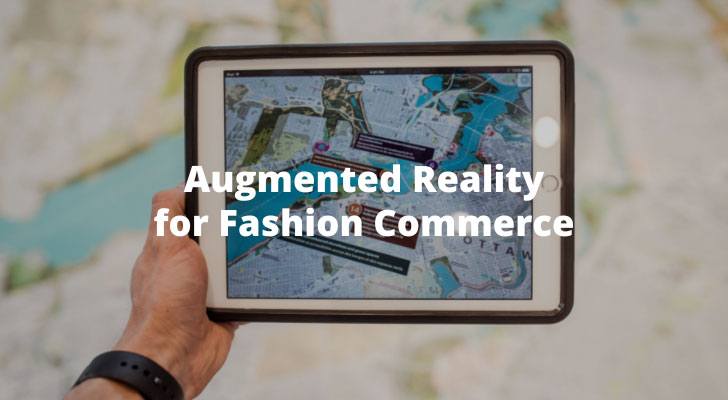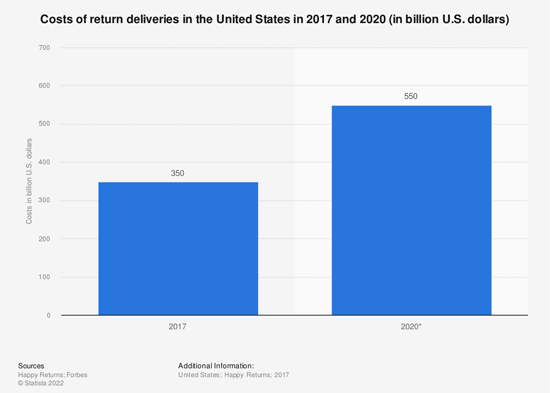Fashion commerce has undergone various changes. Change in fashion commerce is not a big deal. There are huge chances that there will be a drastic change in the upcoming years. Augmented Reality can be seen as a game-changer to meet customers' tastes and engage them.
Statista says that the market for Augmented Reality is worth $30.7 billion and has about 810 million active AR users. And more than 400,000 augmented reality glasses were already sold in 2021. We could give you more numbers, but there's no doubt about it: eCommerce retailers used to rush to use video as a new way to engage customers and increase conversion rates. Now, augmented reality (AR) and virtual reality (VR) are about to change how products are sold online for good.

How does augmented reality work?
Augmented reality adds a layer on top of the real world. The technology can make environments look and feel natural by putting videos, images, and 3D content on top of real-world objects. AR experiences don't have to be limited to headsets. AR can be used on phones, projectors, and other hardware that doesn't need to be specialized.
Here are a few reasons why it's good to use AR:
1. Being different
AR is exciting to consumers because it is also the part of contactless commerce. AR will be fun and rewarding for a lot of people. They usually want to do it again and tell their friends about it. With AR, companies can make it seem like there is no other product that can do the same thing. This takes away pricing as a competitive strategy. When customers think there is no other option, they are more likely to think of your brand when they need to buy something.
2. Customer Experience
Immersive experiences make people feel things, which is a big reason people buy something. "A picture is worth a thousand words" is one of the essential phrases in marketing and advertising. Studies have shown that 47% of online shoppers agree that immersive technologies make them "feel more connected to products."
Immersive experiences make people feel things, which is a big reason people buy something.
Augmented reality in the fashion ecommerce industry lets the user try on a product in a digital environment, so they don't have to try to imagine how it will look.
3. Bring in more money
When companies use Augmented Reality, they make more money. Customers who try out products before buying them feel like they own them. Customers are more likely to buy something if they feel like they already have it. Imagine a salesperson in a clothing store who can't wait for you to try on that new pair of shoes. The Epsilon research from 2018 says that you're 80% more likely to buy them if you try them on.
The AR experience is also an excellent way for companies to teach their customers and give them more information than what's on the box or label. It's also a great chance to sell additional products or accessories with the main item.
Immersive experiences are also a great way to get people to visit physical stores. Customers might want to go to the store to ask questions, look at the products in person, or see what other products the company might sell.
4. Make buyers feel more confident
Buyers want to feel sure about the things they buy. Consumers are generally willing to pay more for a product if they can personalize or customize the immersive experience.
5. Lessens the chance of product returns

Statista says that the cost of product returns in the US in 2020 was as high as $550 billion per year. One of the main reasons people send things back is because they don't like them as much as they thought they would. They bought something based on a stock photo, but it wasn't what they thought it would be when they got it.
By letting customers try out the product in an augmented world, they can see for themselves if they like it or not. The "try before you buy" AR feature of retail giant Macy's has helped the company cut its return rate to less than 2%. (Source: ARInsider 2019)
Here's how early adopters are already benefiting from AR:
1. Online try-on
PWC says that immersive technologies will add $1.5trn to the world's GDP by 2030. (Source: Economist.com) AR in fashion is already helping brands set trends to make more money by giving them access to new tools.
Customers should be able to shop around in a digital setting. Users can look around and interact with things just like they would in an actual store by moving their phones around the room.
Kohl's, a store in the United States, just released the Kohl's AR Virtual Closet. Customers can use Snapchat to access the feature and virtually try on clothes like T-shirts, and jackets. They can also mix and match items to make trendy outfits.
2. Social media filter

Social media filters are an excellent way for brands to show off a new product or collection in a way that gets people's attention, raises brand awareness, and gets people to interact with the brand, all at a low cost.
From a high street favorite to a luxury fashion brand, Gucci adapted to the recent online shopping and social media usage by starting AR experiences on Snapchat.
H&M released six new augmented reality (AR) filters on Instagram to launch its "Kangol feat. Mabel" collection for Autumn 2020. Users could use the filter to make music videos with streetwear from the new line.
3. Boosting customer engagement - Burberry

Burberry can't be talked about without being brought up as an example of a fashion industry innovation. The UK fashion house known for its trench coats is creative in using AR to keep customers and promote its brand. Here are some of the most successful AR projects that the famous company has made.
Burberry worked with artist Danny Sangra to make drawings "inspired by Burberry" for an augmented reality feature in their iOS app. The app was an online store and a way to interact with the brand. With the augmented reality feature, users could decorate their surroundings by adding Danny Sangra's pictures to their photos. They could then share the images on social media, which helped the brand reach new customers.
4. Unique Goods
Most of the time, clothing and furniture are examples of how AR and 3D models can be used. However, the technology isn't just limited to these categories. Heckler's app, for example, lets people put iPad and MacBook stands on their desks to ensure they're the correct size. L'Oréal, which bought the augmented reality try-on tool ModiFace in 2018, says that its conversion rates go up by three times when ModiFace is available. It can also be used to see how tile, wallpaper, and paint colors look in a home.
AR can be used for fun, engaging customers, and social media. In some ways, many stores already do this by making branded filters for Snapchat or Instagram Stories.
5. Product visualization
As we've already said, one of the benefits of AR in fashion eCommerce is that it lets customers get close to products without being in a store. People can get a more exciting and informative visual experience than scrolling through 2D product photos with just their phones.
Asos sped up the testing of an augmented reality (AR) system called "See My Fit," which digitally maps a model realistically that considers each garment's size, cut, and fit. This was done to promote new products to shoppers stuck at home during the lockdown, and avoid physical photoshoots.
Rebecca Minkoff, a global high-fashion brand, added AR features to its product pages so that its products could come to life online. With this AR view, shoppers can virtually put a handbag in front of them and look at it from all sides. This makes the experience much more personal.
Conclusion
Using AR in fashion retail can significantly improve conversion rates, and customer loyalty. It would also give modern shoppers the kind of shopping experience they want.
As the number of fashion consumers who shop online grows, so does their desire for tech-driven experiences. Soon, using AR in retail won't be about getting ahead of competitors, but staying alive in a fashion market that moves quickly.

Author Bio: Vishal Lakhani
CEO and Magento Solution Specialist at Rock Technolabs, with over 10+ years of experience in eCommerce. Apart from blogging and playing with Magento, he loves to read, travel, and learn new technologies that help make the development process easier and more appealing to clients.
What Do You Advocate?

